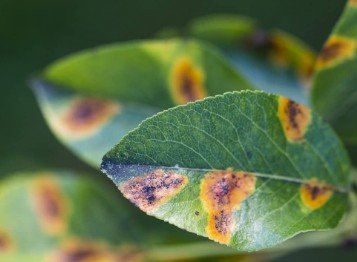Bugs & Pests in Indoor Container Plants
Plants have the capacity to bring great joy, work with your hands, and learn through the process; but there are also some frustrations and possible plant death on the journey to learning. One frustration that can happen in bringing plants to your sanctuary are: pests. The good news is that there are plenty of ways to reduce pests and continue having your sanctuary be a safe haven.
In The Beginning
Before you even buy a plant, check for any pests that like to hide underneath the leaves, on the stem, and in the soil. This defensive measure is the first step in ensuring plants that are well taken care of and pest free. Once a plant is purchase, mix warm water with a little dish soap and either 1) give it a good dunking in the sink or the tub or 2) wipe the leaves with a microfiber glove or wet paper towel. This mixture of warm water and dish soap is the secondary prevention method to decrease the likelihood of pests and prevent future infestations. If there is Neem Oil around, dilute with water and place in a spray bottle. Once these steps are taken, quarantine your plant away from your others to see how it adjusts. Again, these are defensive measures to continue a healthy plant life without any critters.
In The Middle
Once a month when you water, do a pest check. Even with our best efforts, bugs still manage to get through. The first step here is to quarantine that plant and check its immediate surrounding plants to make sure it didn’t spread. Use Captain Jack's Insecticidal Soap, flush the plant with water, use some q-tips & rubbing alcohol over a period of a few weeks to ensure that you have gotten all pests.
Spider mites
can cause significant damage to the leaves by sucking the sap out of them. There may be small webs on the leaves or yellowing leaves.
Mealy Bugs
Small, white, cotton-like insects, that cause stunted growth, yellowing of the leaves, and a sticky residue on the plant.
Scale Insects
Small, brown, oval-shaped insects, that attach themselves to the leaves and stems, causing yellowing of the leaves and a sticky residue.
Root Rot
A fungal disease occurring if soil is too wet which produces wilting leaves, yellowing stem, a foul odor, black and mushy roots. To treat - remove plant, cut away diseased roots with sanitized scissors, and repot in fresh, well-draining soil.
Leaf Spot
A fungal disease causing brown or black spots on the leaves by overwatering or poor air circulation. To treat remove any affected leaves and improve the air circulation around the plant.
In The End
After a few weeks of continuous spraying, checks, and quarantine, there should be no more pests. If the pest infestation spread to your other plants, do each step individually.
Indoor plants, like anything else has some growing pains. While they are a brilliant way to add some foliage and greenery to your home, we cannot avoid pests. Keep your new plant babies happy, strong, and healthy by inspecting your plants, providing it the proper water amount, a rich soil, and the right light.
Plants | Pest Free | Healthy Growth | Plant Community





